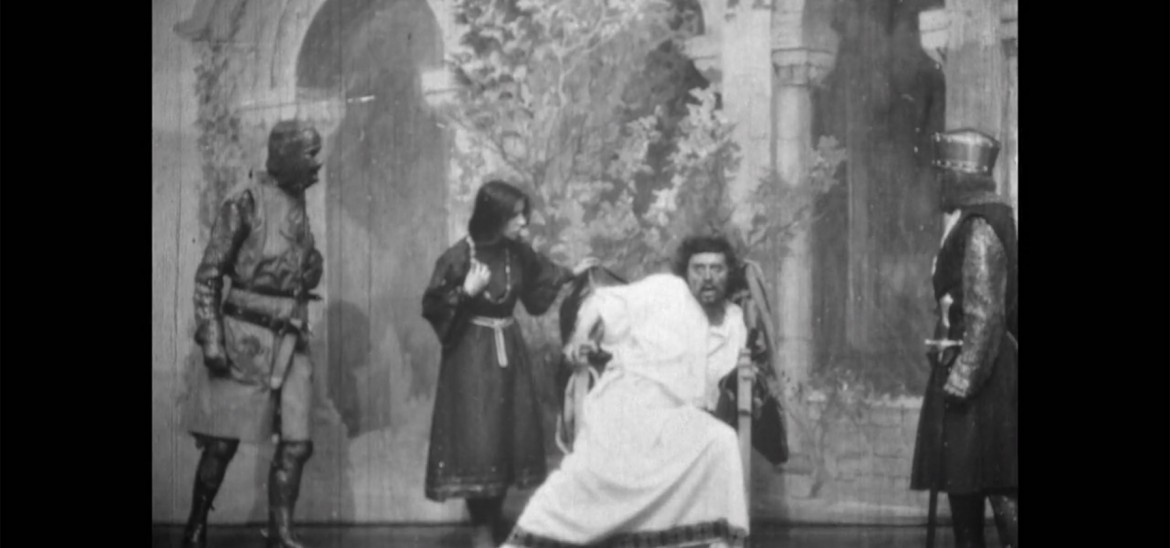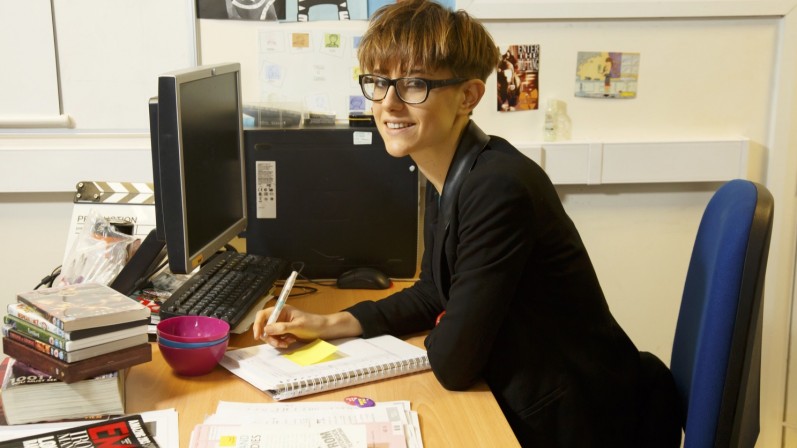Into Film Clubs
Find out everything you need to know about starting an Into Film Club.



Queen Victoria's reign famously saw extraordinary advances in industry, transport, science, and culture. But one vital innovation is too often missed: the moving pictures - the last great invention of the age! This is strange, given that film changed the way we see the world forever.
In 2019 to celebrate the 200th anniversary of Queen Victoria's birth, the BFI made available for free all of its collections from the first six years of the medium of film (1895-1901). Around 700 surviving titles were researched, digitised and in some cases, restored.
Taken together these offer a wonderful and varied resource for teachers and students alike, providing a window directly on to the late-Victorian world. Unlike period dramas and adaptations, archive film is an actual visual record of the past; it shows how people moved, what they wore, how they interacted, and their environment. These films also reveal the tastes and fashions of the time - what made audiences laugh and cry? What did they love to watch on screen and what made them run away?
Below are 12 films specially selected for young people to enjoy and engage with Britain's earliest films - each one in their way pushing the boundaries of technology and subject matter. As you will see, nearly every aspect of filmmaking that we know today was tried during this short period: sound and colour, news, travelogues, drama, fantasy and comedy.
Victorian audiences were first impressed by simple movement; films of breaking waves were hugely popular, but also ‘phantom rides', created by mounting the camera on to the front of moving vehicles!
Waves crash onto a jetty on the Kentish shoreline in one of Britain's earliest surviving films. (Courtesy: BFI National Archive)
Conway's bridge, castle and station glide past, as if in a dream, in this beautiful hand-tinted phantom train ride. (Courtesy: Eye Filmmuseum, Amsterdam)
How did the first filmmakers represent the rapidly-changing world around them? Sport, news, parades, state occasions, images of war and other countries were all highly prized and enabled the Victorians to discover a perspective beyond their own.
Mitchell and Kenyon's gorgeous film of Dumfries schoolchildren. The filmmaking duo specialised in filming crowds and then encouraging them to come and see themselves on film at their local fairground. Find out more about Mitchell and Kenyon. (Courtesy: BFI National Archive)
This film by R.W. Paul is one of the earliest examples of newsreel footage. Find out why it caused such a sensation. (Courtesy: BFI National Archive)
Astonishingly sharp view on to Venice at the end of the 19th century. Historians aren't certain from where this was filmed. What do you think? (Courtesy: BFI National Archive)
Queen Victoria was first filmed at Balmoral on 3 October 1896. Her diary records both the day that the film was shot and the day it was projected. Her review: "It is a very wonderful process, representing people their movements and actions as if they were alive."
Queen Victoria and family experience the new 'cinematograph process'. (Courtesy: BFI National Archive)
"We are not amused", Queen Victoria famously said - or so we are told. Her subjects, though, were eager for all sorts of entertainments - drama, comedy, magic, spectacle, and of course silliness - and film was happy to oblige!
The first ever Shakespearean film (once thought to be lost) with actor Herbert Beerbohm Tree in the title role. (Courtesy: BFI National Archive)
This entertaining, ever-so-slightly disgusting film (perfect for young audiences!) captures variety star Herbert Campbell in character as 'Little Bobby' from a contemporary Drury Lane production of Jack and the Beanstalk. (Courtesy: BFI National Archive)
Britain's earliest surviving ‘sound' film! Listen to Lil Hawthorne (1877-1926), a well-known American singer from Nashville, Illinois, performing the song Kitty Mahone. (Courtesy: BFI National Archive)
Don't try this at home kids! Masterful jugglers showcase their dexterity in this fast-paced restaurant scene. (Courtesy: BFI National Archive)
Cutting-edge cinema trickery gives the art of illusion a little more magic in this fun short film. This trick film appears to be one continuous shot, but is made up of several shorter shots edited together to make objects emerge from thin air. (Courtesy: BFI National Archive)
This curious film is credited as the first to play with the internal logic of the film form itself. What do you think this film is about? You can learn more about this curiosity here. (Courtesy: BFI National Archive)
This article was adapted from material available in the BFI's free online course The Living Picture Craze: An Introduction to Victorian Film, currently available on FutureLearn.
Viewing 4 of 4 related items.

Get in touch with your article ideas for the News and Views section.